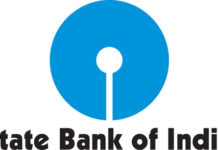Prompt Corrective Action by RBI
Prompt Corrective Action is a measure to maintain the financial health of banks, it involves monitoring of certain performance indicators as an early warning exercise. Regulators use four different capital measures to determine a bank’s capital category :-
- A total risk-based capital ratio
2. A Tier-1 risk-based capital ratio
3. A leverage ratio (or non-risk-based capital ratio)
4. Equity to assets ratio
The RBI has also defined 3 kinds of risk thresholds and declares to take mandatory action if a bank breaches the risk thresholds.
The risk thresholds include:-
- Restriction on dividend payment/remittance of profits
- Restriction on branch expansion, higher provisions
- Restriction on management compensation and director’s fees
The Main Objective of the RBI is to facilitate the banks to take corrective measures in order to restore their financial health.
Prompt Corrective Action – Capital Categories –
| Capital Category |
Total risk- based Capital |
Tier 1 risk based Capital |
Leverage Capital |
| Well-capitalized | 10% or more and | 6% or more and |
5% or more |
| Adequately Capitalized |
8% or more and | 4% or more and |
4% or more |
| Undercapitalized | Less than 8% or | Less than 4% or |
Less than 4% |
| Significantly Undercapitalized |
Less than 6% or | Less than 3% or |
Less than 3% |
| Critically Undercapitalized |
An institution is critically undercapitalized if its tangible equity is equal to or less than 2% of total assets regardless of its other capital ratios |
||
Prompt Corrective Action is not intended to constrain normal operations of banks for the public but to curb high bad loans and negative Return on Assets (ROA). It is also done to encourage banks to abstain from certain riskier activities and focus on conserving capital to make the balance sheet stronger.
Benefits of Prompt Corrective Action –
- It serves as a safeguard tool if other enforcement actions are delayed.
- It empowers state banking regulators to close critically undercapitalized banks and provide a roadmap for doing so.
- The 90-day closure provision in PCA facilitates an orderly resolution.
- It encourages banks to hold more capital to minimize the possibility of triggering mandatory supervisory action.
If banks undergo Prompt Corrective Action, it will not affect their performance, it will only improve the internal controls and improvements. Now, the banks would be monitored on the basis of capital, asset quality and profitability.
IDBI Bank, Indian Overseas Bank, UCO Bank, Dena Bank and the Central Bank of India have already come under the PCA initiated by the RBI, which is a noose-tightening on fresh loan disbursal as well as the dividend distribution.
Recently, RBI has initiated Prompt Corrective Action against Bank of Maharashtra as well. Based on the revised PCA framework, a total of 16 PSBs out of 21 (excluding SBI associates) and 2 out of 16 private banks will require taking mandatory corrective actions or face restrictions to come out of the PCA framework. In extreme cases, the PCA framework provides the RBI with powers to force mergers or even wind up the non-compliant banks.
Mandatory Actions for Banks by RBI –
- Bank will not access/renew costly deposits and CDs.
- They will take steps to increase fee-based income.
- The Bank will take steps to contain administrative expenses.
- Bank will launch a special drive to reduce the stock of NPAs and contain generation of fresh NPAs.
- The Bank will not enter into new lines of business.
- Bank will reduce/skip dividend payments.
- RBI will impose restrictions on the bank on borrowings from the interbank market.
Discretionary Actions by RBI –
- The Bank will not incur any capital expenditure other than for technological up gradation within Board approved limits.
- Bank will not expand its staff or fill up vacancies.
















